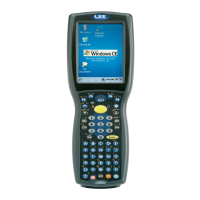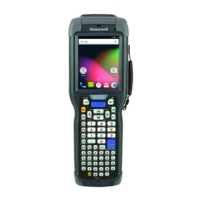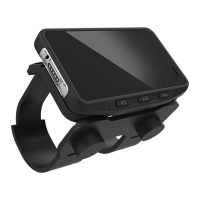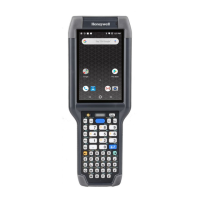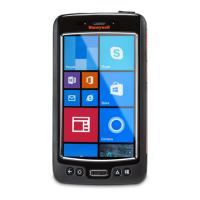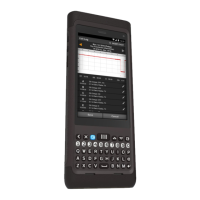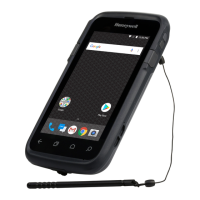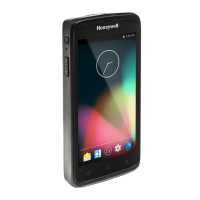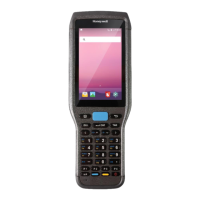Chapter 8: KeyMaps
Introduction
The keypad is available in a 62-key or 38-key configuration. The 62-key keypad is also available in an IBM 5250 configuration.
l When using a sequence of keys that includes a sticky key, press the sticky key first, release it, then press the rest of
the key sequence.
l Sticky keys do not need to be held down while pressing the next (or desired) key.
l When using a sequence of keys that includes the Orange or Blue keys, press the color key first then the rest of the key
sequence.
l Alphabetic keys default to lower case letters. Press the Shft/Shift key, then the alphabetic key for an uppercase letter.
Note: In general, sticky keys refer to those keys that, when pressed once and released, are still in effect and affect the
function of the next key pressed.
62-Key Keypad KeyMap
The following keypad keymap is used on an MX9 that is not running a Terminal Emulator. Terminal emulators use a separate
keymap.
A modifier key pressed after itself toggles that modifier key off.
Modifier keys pressed following any other modifier key clears earlier modifier keys.
Any key press, other than the up arrow or down arrow, exits the volume control and backlight control.
To get this function Press these keys in this order Result / Notes
Windows key CTL ESC Windows Start menu
On (when Off) Power Power On
Suspend toggle (when
On)
Power
Suspend or Resume
mode
Volume Up Orange Right Scan Up Arrow Volume increases
Volume Up Blue V Up Arrow Volume increases
Volume Down Orange Right Scan Down Arrow Volume decreases
Volume Down Blue V Down Arrow Volume decreases
Display Backlight
Lighter
Blue Right Scan Up Arrow Backlight lighter
Display Backlight
Darker
Blue Right Scan Down Arrow Backlight darker
Alt mode ALT Alt mode
Ctl mode CTL Control mode
Escape ESC Escape
Space SPC Space
8-1

